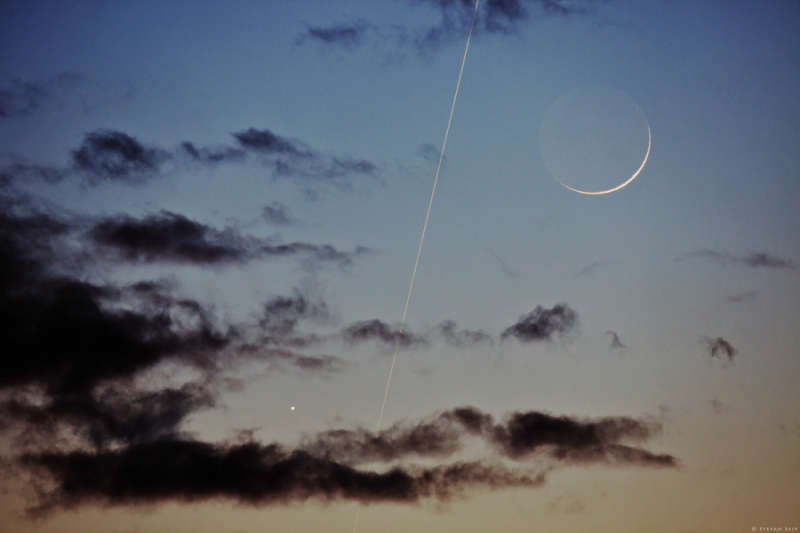Credit & Copyright: Stefan Seip
(TWAN)
Explanation:
Planet Earth has many moons.
Its largest artifical moon, the
International Space Station, streaks
through this lovely skyview with clouds in silhouette
against the fading light of
a sunset.
Captured from Stuttgart, Germany last Sunday,
the frame also includes Earth's
largest natural satellite 1.5 days after its New Moon phase.
Just below and left of the
young crescent is Jupiter, another
bright
celestial beacon hovering near
the western horizon in early evening skies.
Only briefly, as
seen from the photographer's location,
Jupiter and these moons of Earth formed the remarkably close
triple conjunction.
Of course, Jupiter
has many moons too.
In fact, close inspection of the photo will reveal tiny pin pricks
of light near the bright planet,
large natural satellites of Jupiter known
as Galilean moons.
1999 2000 2001 2002 2003 2004 2005 2006 2007 2008 2009 2010 2011 2012 2013 2014 2015 2016 2017 2018 2019 2020 2021 2022 2023 2024 2025 |
Yanvar' Fevral' Mart Aprel' Mai Iyun' Iyul' Avgust Sentyabr' Oktyabr' Noyabr' Dekabr' |
NASA Web Site Statements, Warnings, and Disclaimers
NASA Official: Jay Norris. Specific rights apply.
A service of: LHEA at NASA / GSFC
& Michigan Tech. U.
|
Publikacii s klyuchevymi slovami:
Moon - ISS - conjunction - Luna - Yupiter - MKS - Soedinenie planet
Publikacii so slovami: Moon - ISS - conjunction - Luna - Yupiter - MKS - Soedinenie planet | |
Sm. takzhe:
Vse publikacii na tu zhe temu >> | |
